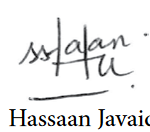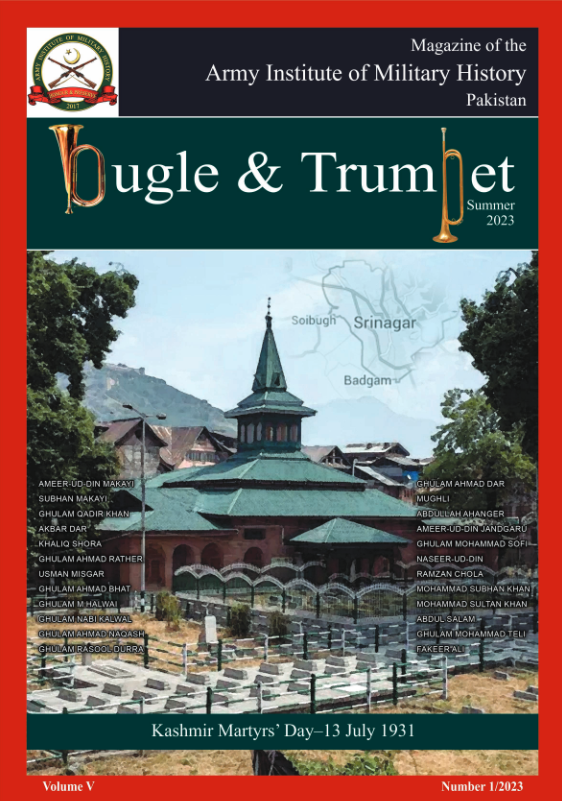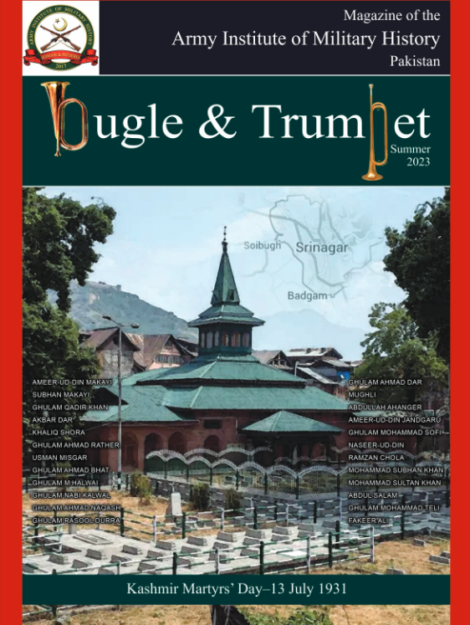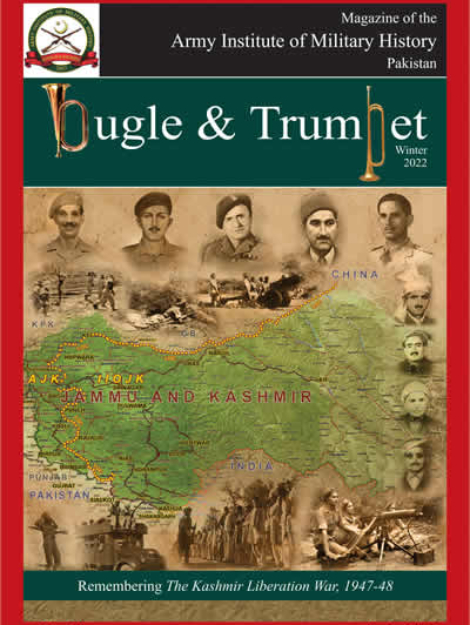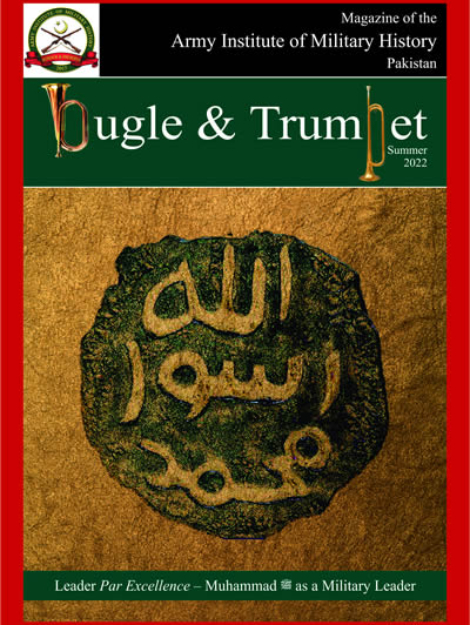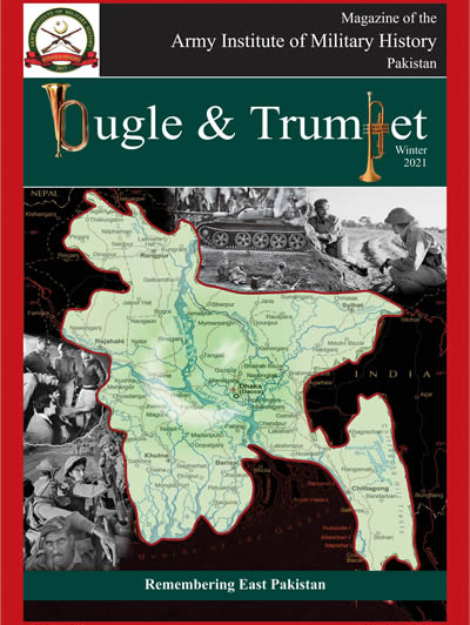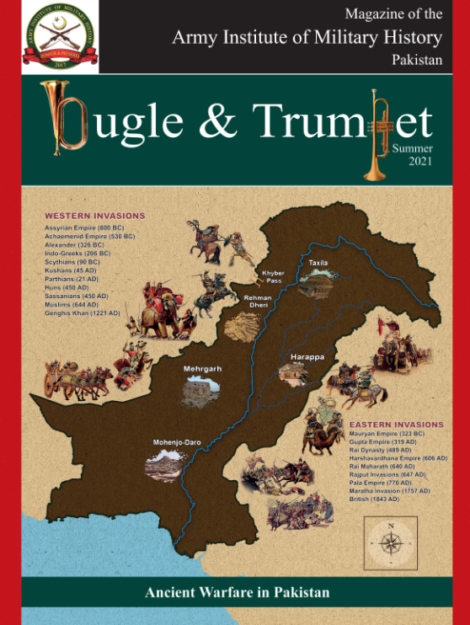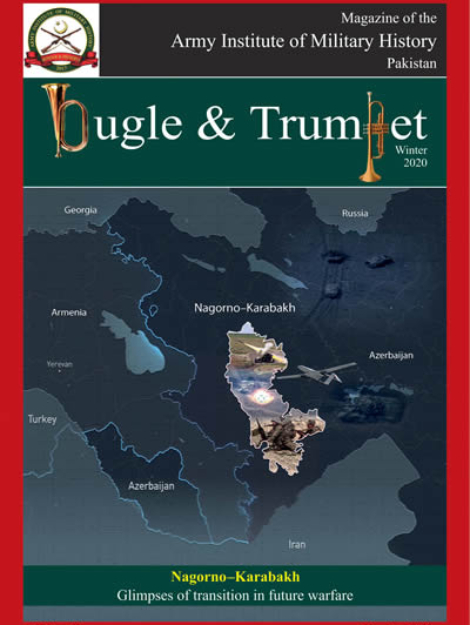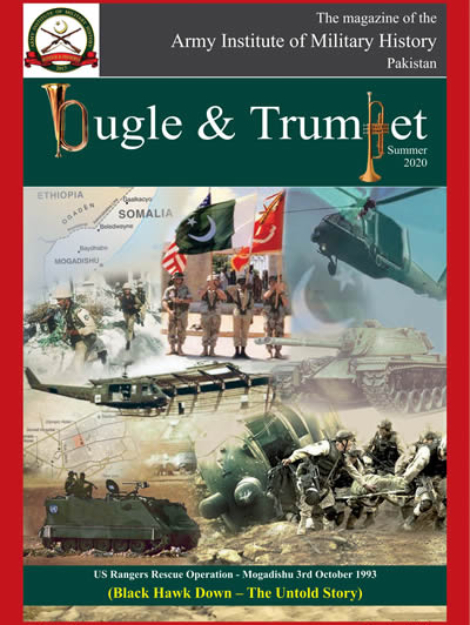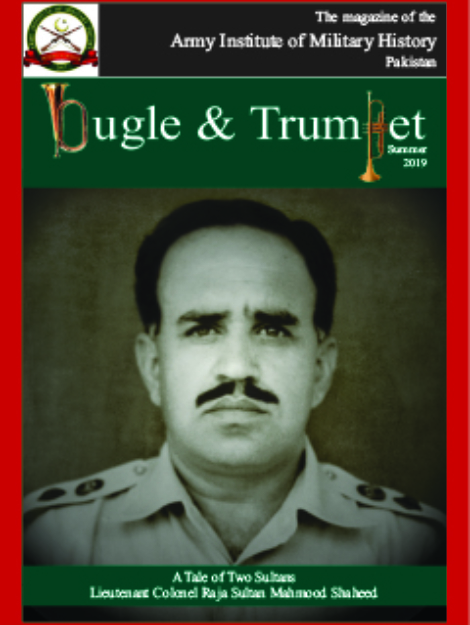About Bugle & Trumpet
As a publication with the love of military history at its core, Bugle & Trumpet (B&T) aims at providing readers with a diverse cross-section of articles that showcase different aspects of military history, and attempts to do so in a readable manner. It tells the stories of unsung heroes and living legends, and celebrates individual acts of courage. It attempts to stimulate intellectual probity and foster a fondness for this all-important, yet oft-neglected subject.
By means of its interactive nature, whereby readers may freely contribute their anecdotes, personal experiences, photographs and musings, it aims at becoming a publication which is anticipated; a place which every military history enthusiast in Pakistan might call home.
The views expressed in Bugle & Trumpet are those of the authors and do not reflect those of AIMH. All content is the intellectual property of AIMH and may be reproduced or quoted with due credit to the author and B&T. Readers are invited to contribute for the B&T. Original articles related to military history, upto 2000 words in font size 12 (Times New Roman) with double line spacing, on A-4 size paper, alongwith relevant details like photographs, maps or sketches may be sent both in hard and soft form to the editor. Endnotes (Chicago Style) and a brief biographic note of the author, including passport size photograph. are required. Contributors will be paid a remuneration @ Rs. 3/- per word. The editor reserves the right to edit or reject contributions.
Current Issue
Kashmir Martyrs' Day - 13 July 1931
We are pleased to produce another issue of our flagship publication Bugle & Trumpet at an eventful time of our nation’s history. Every issue of B&T brings highly researched, comprehensive, and fascinating tales of unsung heroes and military campaigns. The 9th issue encompasses a variety of articles on military history, reflecting upon Indo-Pak Wars and pre-partition regimental history.
On the eve of the 75th anniversary of the Kashmir Liberation War of 1947-48, the cover story highlights the sacrifices of our Kashmiri brethren who have been fighting for their fundamental rights since long before independence in 1947. July 13, 1931 has a great significance in the history of Kashmir. On this day, Jammu & Kashmir witnessed the first organised agitation against the oppressive rule of Hari Singh; then Maharaja of Kashmir. It was the day when 22 people were martyred by state forces during a peaceful demonstration in Srinagar. July 13, 1931 is remembered as the beginning of political awakening among the Kashmiri people, and is commemorated as Martyrs’ Day.
The Battle of Pandu 1948 is an epic story of a counter-attack by Pakistani troops during the 1947-48 Kashmir Liberation War, by virtue of which the Pakistan Army re-took from the Indians, the Pandu massif in the Uri sector of Jammu & Kashmir. The success of this operation had great tactical as well as strategic importance. It not only halted the Indian summer offensive in the Jhelum Valley, but also ensured the safety of Muzaffarabad, the capital of Azad Jammu and Kashmir. Indians suffered one of their most consequential defeats at Pandu, as described in their own account Defending Kashmir, in these words–Pakistan launched a counter-attack at Pandu and re-captured it. This dominating feature above 9000 feet, stands today as a symbol of our commitment and unwavering resolve to fight for every inch of our soil.
Captain Muhammad Sarwer, shaheed, NH reminds us of our first Nishan e Haider (NH) who got martyrdom on 27th July 1948, during the Kashmir Liberation War. Today, the nation remembers Captain Sarwar on his 75th death anniversary. His sacrifice will inspire defenders of Pakistan, in times to come.
At the end, these articles express our resolve to stand firm with our armed forces, to face all challenges to our nation.
Stay blessed!
